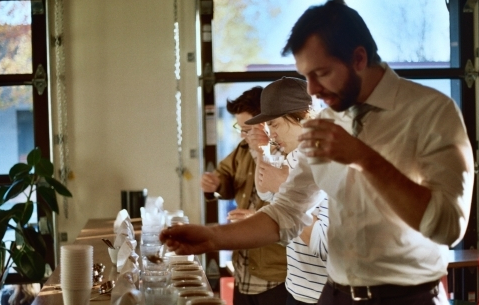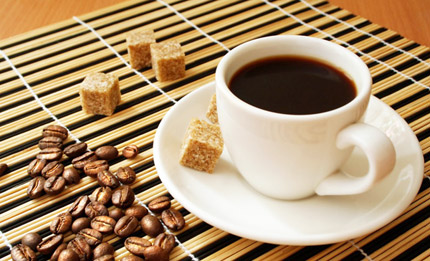How to know whether a new bean is good or bad? Cup test-professional criteria for testing beans
The quality of coffee beans is the most important thing for all coffee people. unroasted coffee beans enter the port from their place of origin. whether the quality of this batch of coffee beans is good, should not be imported in large quantities, and how much should be imported? this is the most urgent assessment that coffee traders want to make. You may wonder, in the face of so many kinds of coffee, how do they decide whether coffee is good or bad? That is the "cup test".
The "cup test" is a traditional method that has been used for more than 100 years. In a professional "cup test room," the life tie of all kinds of coffee is determined. They may be classified as second-or third-grade coffee beans, or they may be unused coffee, or they may be powerful products. In any case, everything is decided in this trial.
The whole "cup test" process goes something like this: a group of coffee experts or roasters first give birth to beans, then roast them immediately with a small amount of beans, and when the beans are cold, grind them into a generally coarse boiled water (97 degrees Celsius) into a short glass, then pour a certain amount of coffee powder into the cup. The standard quantity is 7.25 grams of coffee and 5 ounces of water. At this time, the coffee tested in different cups on the small table has already dissipated the aroma of the coffee, and the coffee powder in the cup has begun to bulge into hills and hills, so the expert picked up a spoon to open the coffee grounds, put his nose close to the mouth of the cup, sucked the breath of the coffee, sipped it with his mouth, felt the taste of the coffee, and then spit it out. They quickly spin the small table, drink cups of coffee, and divide them on the form. This is the "cup test".
The above is a very simple description of the "cup test", but the studies and qualifications involved in the whole process are actually complex and complicated, but if the owner has the interest of roasting coffee beans, the "cup test" is indeed the best way to understand the characteristics of all kinds of coffee.

Source:
The blog of happy life
Important Notice :
前街咖啡 FrontStreet Coffee has moved to new addredd:
FrontStreet Coffee Address: 315,Donghua East Road,GuangZhou
Tel:020 38364473
- Prev

Four factors that can not be ignored to determine whether a cup of Espresso Italian concentrate tastes good or not
There are four essential factors for a good cup of espresso coffee: 1. Coffee: the most important thing to cause delicacy is to make a cup of coffee made by nine Italian coffee makers, and it is generally believed that the best price is about nine tasty coffee. The semi-automatic machine used for employment is usually free to change the size of the coffee bar, while most coffee bar operators set the machine to 9 yuan.
- Next

Coffee has a unique flavor. How to mix different coffee beans will have different flavors.
Coffee has a unique flavor, and in order to bring out the personality of coffee beans, coffee beans need to be mixed. The most important thing in mixing is to be clear about the flavor you want. So let's learn about beans! Knowing the personality of coffee beans makes it easier to impress on their taste. After deciding on the coffee beans to be used as the base, select the auxiliary beans that can exert their characteristics. You can also enjoy your own.
Related
- What is the meaning of lactic acid fermentation with coffee bean treatment?
- How to judge the state of foam by sound?
- How does the latte pull out the unicorn pattern? Come to get for a little trick to improve the flower pull!
- Will flower pulling affect the taste of the latte?
- Do you know the history of coffee?
- The difference between honey treatment and sun washing what is raisin honey treatment?
- What kind of milk can a novice use to make coffee foam to keep the foam longer? The correct method and skills of milking tutorial sharing
- Why do washed coffee beans taste sour? Flavor characteristics of washed Coffee
- Introduction to the skill of how to practice the size and height of water injection around the circle of hand-brewed coffee
- How do beginners practice coffee flower drawing from scratch?

